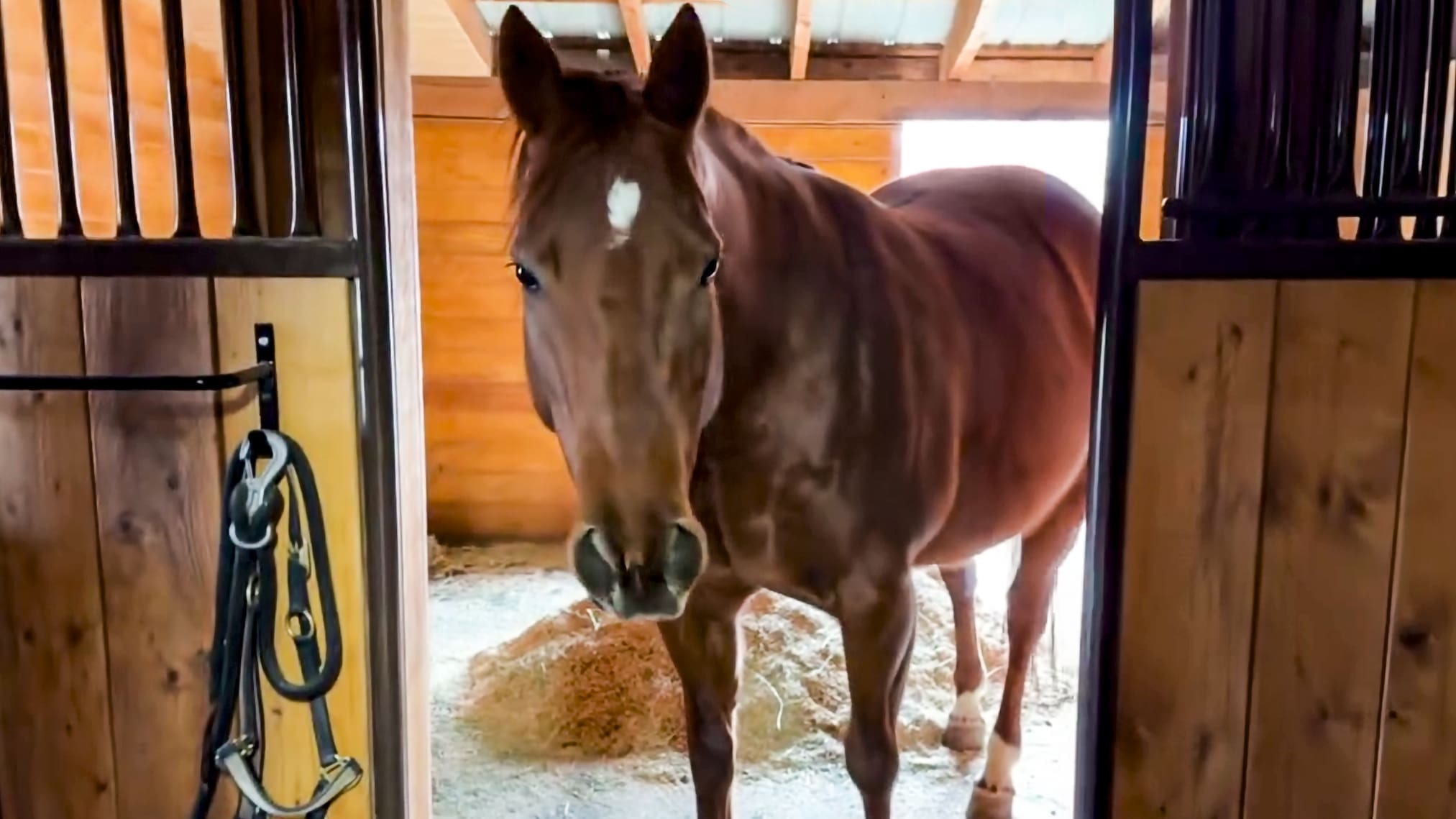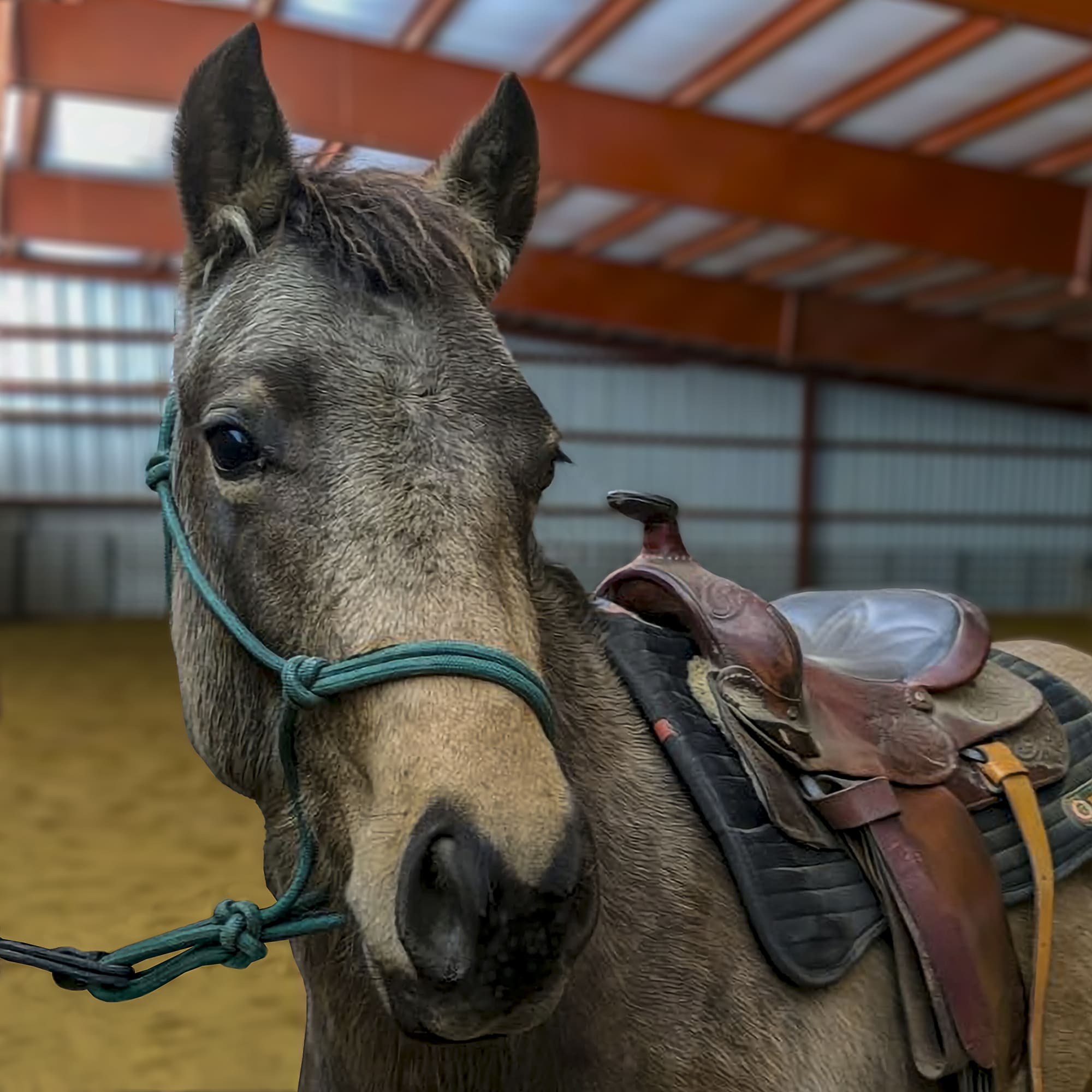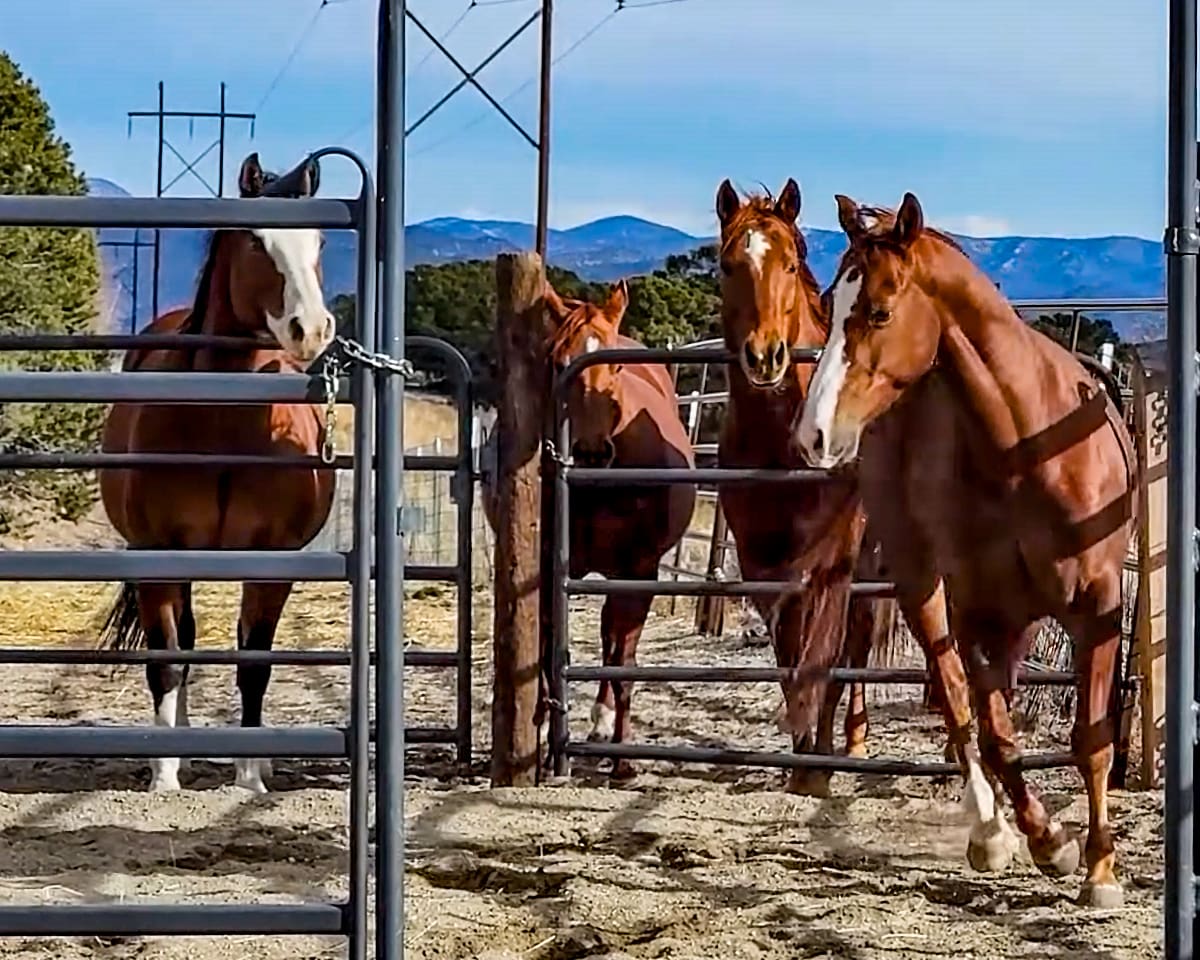By Jeannie Willems, LVT, RVT, BS
Horses are living longer, more productive lives. This is partly due to the willingness of the horse owner to take better care of their investment, whether it’s a retired racehorse or a faithful old friend. Education is the key to helping the horse owner provide a good quality of life for older, senior horses.
Senior horse care begins in the horse’s younger years; how a horse is managed early on can have a direct bearing on the length and quality of life later on.
Horse to human age comparison
Horse age Stage of life Human age Stage of life
| 1 | Foal, weanling, yearling | 6.5 | Infant, baby, toddler, preschooler |
| 2 | 2 year old | 13 | Adolescence/Puberty |
| 3 | 3 year old | 18 | Teenager |
| 4 | 4 year old | 20.5 | Young adult |
| 5 | Physical maturity | 24.5 | Adult |
| 13 | Middle-aged | 43 | Middle-aged |
| 20 | Senior | 60 | Senior |
| 30 | Old age | 85 |
Factors to consider for senior horse care
Body condition
Observing the horse’s body condition, or using the body scoring chart, is the first place to start in assessing the older horse’s needs. As horses age, so do their requirements to maintain status quo increase each year. Too much or too little weight is a cause of concern, as many metabolic conditions can become major health factors. Daily scrutiny of the horse’s general well-being, as well as any new lumps or bumps, should be noted and addressed as soon as possible.
Dental issues
The senior horse’s teeth should ideally be checked at least every 6 months, as sharp edges and hooks on the teeth can be painful and can interfere with chewing and proper movement of the tongue in the mouth. This can result in the loss of important nutrients needed to maintain proper weight and health.
Appropriate feed
Ideally, pasture is the best for any horse. However, the older horse may require hay and/or feed to help reach its minimum requirements for maintenance. Senior feeds are formulated to meet the specific needs of the older horse, taking into consideration the lifetime wear and tear on the teeth, and ease of chewing, swallowing, and digesting, compared to adult feeds.
Developing a diet for the older horse can be challenging. It should be easy to chew, have improved nutrient absorption, and be palatable. Ideally, it should contain 12-14% crude protein, 0.3% phosphorus, and 0.3-1% calcium. Forages should be softer grasses, such as orchard grass and timothy; hay that has stems or stalks is not ideal, although soaking the hay can soften it so the horse can eat it more easily. Senior feeds usually contain more than enough roughage and added fat to meet the older horse’s fiber and calorie requirements with little to no grass or hay. Complete pelleted feeds may be a better choice than textured feeds because they have less sugar for those with metabolic issues, and a reduced possibility of mold. Pellets can also be soaked for horses with dental issues.
Supplements can be added for horses with veterinary abnormalities or nutrient deficiencies. Care should be taken not to over supplement certain vitamins and minerals, as balanced feeds and adequate hay or pasture should be sufficient. Older horses may need supplemented vitamin A, and glucosamine and chondroitin sulfate for joint health. Omega three fatty acids are not in any natural food source and therefore must be added to the diet, but not in the completed feed, as stability is an issue. It is important to choose a supplement from a manufacturer that can back its claims with research and quality manufacturing practices.
Herd dynamics must also be taken into account when feeding the older horse as it may not be able to compete for food with the younger and stronger horses.
Baseline parameters
Establishing baseline parameters for the older horse, such as TPR, weight, and body condition score, can help with diagnoses later. It is important to note that what is “normal” for one horse may not be for another. Other important baseline measurements to have on file include CBC, liver and kidney enzyme values, and thyroid levels.
Weight loss
Weight loss in an older horse can be due to loss of muscle, the inability to compete for food access, poor nutrition, bad teeth, the absence of or delinquency of a deworming program, or an underlying disease that affects the horse’s ability to metabolize nutrients to maintain weight.
Weight gain
Weight gain can be due to loss of lean muscle mass and increased fat storage due to decreased exercise or injuries. Also, in older animals, the body becomes more resistant to insulin, resulting in insulin resistance, similar to Type 2 diabetes in humans.
Vaccinations
The efficacy of vaccines in older horses is undetermined. More research is needed to determine whether giving more or higher doses of vaccine is advisable. Until then, routine vaccinations, including rhino/flu, EWT, West Nile virus, and rabies should be given as usual. Senior horses may not have the same exposure to infectious agents as younger horses because they may not be leaving the barn for shows or interacting with unfamiliar horses. Therefore, extra care should be taken when exposing them to a new arrival to the barn, and potential cross contamination with buckets, tack, or grooming equipment.
Deworming
Deworming should be based first on need as indicated by fecal egg counts, to determine which anthelmintic is required. Encysted strongyles or cyathostomes are a distinct threat for the older horse as they can live in the gut for years, and build up over time if the horse has not been on a preventative deworming schedule. Deworming should be on a rotational basis every two months to avoid resistance build up.
Hoof and joint issues
Hoof and joint issues can quickly manifest from critical care to life threatening problems. Hooves should be cleaned out daily, and the lower legs and hooves examined for any signs of heat that may indicate laminitis, arthritis, or injuries to ligaments or tendons. The senior horse’s hooves may be more brittle and grow more slowly than a younger horse. The joints can develop arthritis or ringbone, which can be debilitating. These horses can do better with more movement to keep the joints lubricated, and a joint supplement to decrease cartilage breakdown.
Shelter
Adequate shelter should always be provided to protect from extreme heat and cold. Extra care should be given during colder months to ensure the horse can move safely on frozen ground. Providing shade and protection from insects is important during the hot summer months.
Disease management
Senior horses are more susceptible to numerous diseases and conditions simply due to being older. These include pituitary dysfunction and tumors, insulin resistance or equine metabolic syndrome, as well as colic, cancer, arthritis, heaves, and respiratory conditions. Management of diet and exercise can help reduce the effects of these diseases. Eye problems in the senior horse include cataracts or other floating material in the eye, although horses seem to adapt quite well as long as they know their surroundings.
Quality of life and euthanasia
Quality of life for the senior horse should be the goal of every horse owner. For horses at the end of life, euthanasia can be performed by administering an overdose of sodium pentobarbital. A sedative can be used to keep the animal calm before the overdose is given.
Gunshot or captive bolt can produce an instantaneous death, although proper technique and placement is critical.
The disposal of the remains depends on the owner’s budget, the area resources, and personal preference of the horse owner.
Summary
As horses are now living to an older age thanks to advanced veterinary care and optimal nutrition, proper management early in life can is key. The veterinary technician can help educate the horse owner on how to maintain the horse’s quality of life, and help to determine the appropriate time for euthanasia.
This article is based on Ms. Willem’s presentation at the Western Veterinary Conference in Las Vegas, NV.




No comment yet, add your voice below!